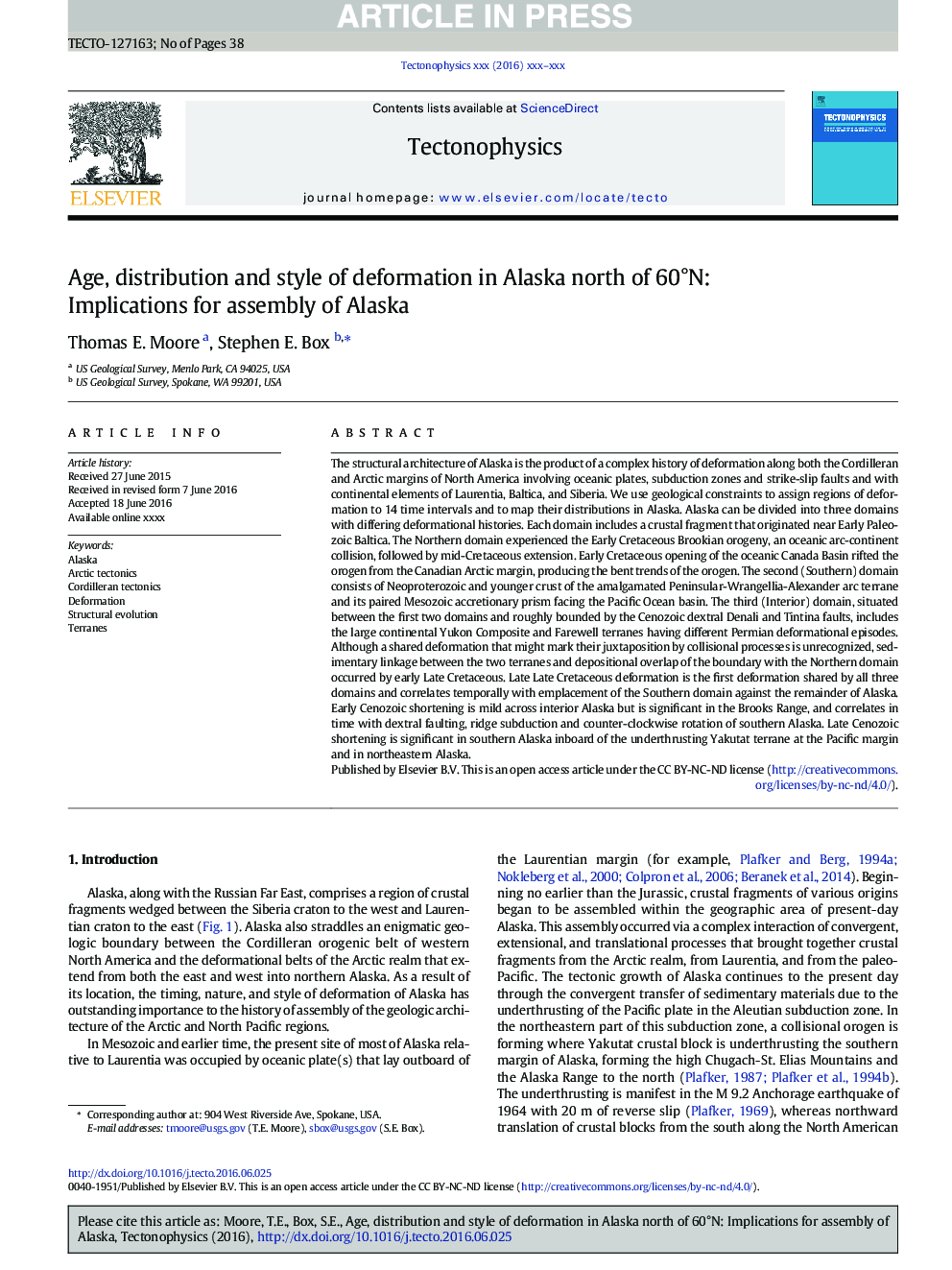| Article ID | Journal | Published Year | Pages | File Type |
|---|---|---|---|---|
| 5781792 | Tectonophysics | 2016 | 38 Pages |
Abstract
The structural architecture of Alaska is the product of a complex history of deformation along both the Cordilleran and Arctic margins of North America involving oceanic plates, subduction zones and strike-slip faults and with continental elements of Laurentia, Baltica, and Siberia. We use geological constraints to assign regions of deformation to 14 time intervals and to map their distributions in Alaska. Alaska can be divided into three domains with differing deformational histories. Each domain includes a crustal fragment that originated near Early Paleozoic Baltica. The Northern domain experienced the Early Cretaceous Brookian orogeny, an oceanic arc-continent collision, followed by mid-Cretaceous extension. Early Cretaceous opening of the oceanic Canada Basin rifted the orogen from the Canadian Arctic margin, producing the bent trends of the orogen. The second (Southern) domain consists of Neoproterozoic and younger crust of the amalgamated Peninsular-Wrangellia-Alexander arc terrane and its paired Mesozoic accretionary prism facing the Pacific Ocean basin. The third (Interior) domain, situated between the first two domains and roughly bounded by the Cenozoic dextral Denali and Tintina faults, includes the large continental Yukon Composite and Farewell terranes having different Permian deformational episodes. Although a shared deformation that might mark their juxtaposition by collisional processes is unrecognized, sedimentary linkage between the two terranes and depositional overlap of the boundary with the Northern domain occurred by early Late Cretaceous. Late Late Cretaceous deformation is the first deformation shared by all three domains and correlates temporally with emplacement of the Southern domain against the remainder of Alaska. Early Cenozoic shortening is mild across interior Alaska but is significant in the Brooks Range, and correlates in time with dextral faulting, ridge subduction and counter-clockwise rotation of southern Alaska. Late Cenozoic shortening is significant in southern Alaska inboard of the underthrusting Yakutat terrane at the Pacific margin and in northeastern Alaska.
Related Topics
Physical Sciences and Engineering
Earth and Planetary Sciences
Earth-Surface Processes
Authors
Thomas E. Moore, Stephen E. Box,
